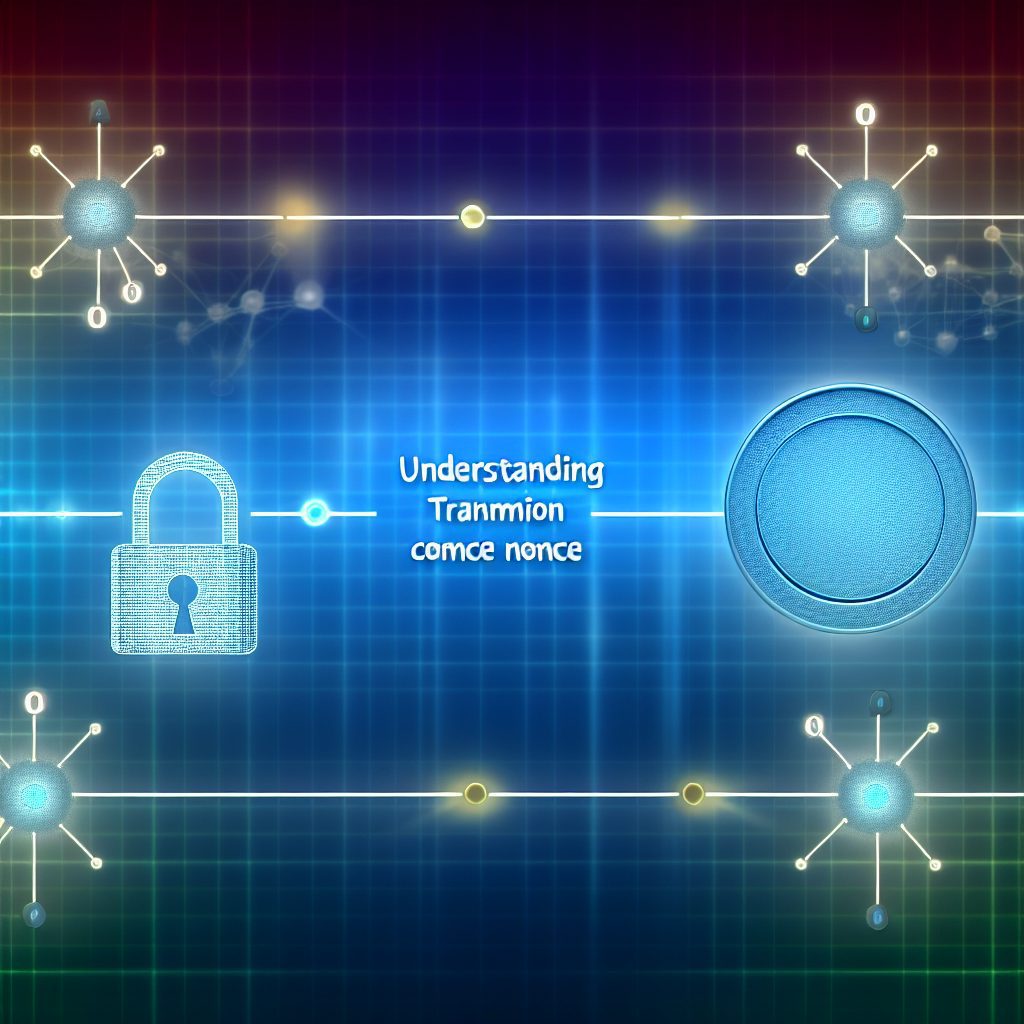Understanding Transaction Nonce in Cryptocurrency
In the world of cryptocurrency, the term nonce often surfaces, particularly in discussions surrounding blockchain transactions and mining. Understanding what a nonce is and its significance can greatly enhance your grasp of how cryptocurrencies operate. This article delves into the concept of transaction nonce, its role in blockchain technology, and its implications for users and miners alike.
What is a Nonce?
The term nonce is derived from the phrase “number used once.” In the context of cryptocurrency, a nonce is a unique number that is used to ensure that each transaction is distinct and cannot be replicated. This concept is crucial for maintaining the integrity and security of blockchain networks.
The Role of Nonce in Blockchain Transactions
In blockchain technology, every transaction must be unique to prevent double-spending and to maintain a secure ledger. The nonce plays a vital role in this process by serving as a counter that increments with each transaction made by a user. Here’s how it works:
- Uniqueness: Each transaction includes a nonce that is unique to that specific transaction. This prevents any two transactions from being identical.
- Order of Transactions: The nonce helps to establish the order of transactions. If two transactions are submitted at the same time, the one with the lower nonce will be processed first.
- Security: By using a nonce, the blockchain can ensure that each transaction is valid and has not been tampered with.
How Nonce Works in Different Cryptocurrencies
While the concept of nonce is consistent across various cryptocurrencies, its implementation can differ. Here are a few examples:
Bitcoin
In Bitcoin, the nonce is primarily used in the mining process. Miners must find a nonce that, when hashed with the block header, produces a hash that meets the network’s difficulty target. This process is known as proof of work. The nonce in Bitcoin is a 32-bit field, which means miners have a limited range of values to try before they must change other block header fields.
Ethereum
In Ethereum, the nonce serves a different purpose. Each account has a nonce that represents the number of transactions sent from that account. This nonce must be included in every transaction to ensure that it is processed in the correct order. If a transaction is submitted with a nonce that is not equal to the expected value, it will be rejected by the network.

Other Cryptocurrencies
Many other cryptocurrencies, such as Litecoin and Dash, also utilize nonces in their transaction processes, albeit with variations in implementation. Understanding how nonce functions in these different ecosystems can provide deeper insights into their operational mechanics.
The Importance of Nonce in Preventing Double Spending
One of the most critical functions of a nonce is its role in preventing double spending. Double spending occurs when a user attempts to spend the same cryptocurrency more than once. By requiring a unique nonce for each transaction, blockchain networks can effectively prevent this fraudulent activity.
For example, if a user tries to send the same Bitcoin to two different addresses simultaneously, the network will reject one of the transactions if the nonces do not match the expected values. This mechanism ensures that each transaction is processed only once, maintaining the integrity of the blockchain.
Nonce and Transaction Fees
Transaction fees are another aspect where nonce plays a significant role. In networks like Ethereum, users can set higher fees for transactions with lower nonces to prioritize their processing. Miners are incentivized to include transactions with higher fees in the blocks they mine, leading to faster confirmations for those transactions.
Real-World Use Cases of Nonce
Understanding nonce is not just theoretical; it has practical implications in the cryptocurrency space. Here are some real-world use cases:
Decentralized Finance (DeFi)
In the DeFi sector, where users frequently interact with smart contracts, the nonce is crucial for ensuring that transactions are executed in the correct order. For instance, if a user wants to swap tokens on a decentralized exchange, the nonce ensures that the transaction is processed before any subsequent transactions that may depend on it.
Token Transfers
When transferring tokens between wallets, the nonce ensures that each transfer is unique. If a user attempts to send multiple transactions simultaneously, the nonce will dictate the order in which they are processed, preventing any potential conflicts.
Challenges and Considerations with Nonce
While nonce is essential for maintaining the integrity of blockchain transactions, it is not without its challenges. Here are some considerations:
- Nonce Management: Users must carefully manage their nonces, especially when sending multiple transactions. Failing to do so can result in rejected transactions.
- Network Congestion: During periods of high network activity, users may need to adjust their transaction fees and nonces to ensure timely processing.
- Security Risks: If a malicious actor can predict or manipulate a user’s nonce, they may attempt to exploit this for fraudulent transactions.
FAQs about Transaction Nonce
What happens if I use the same nonce for multiple transactions?
If you use the same nonce for multiple transactions, only one of those transactions will be processed. The others will be rejected by the network as they are considered duplicates.
Can I manually set the nonce for my transactions?
Yes, many wallets allow users to manually set the nonce for their transactions. This can be useful for prioritizing certain transactions or correcting nonce issues.
How does nonce affect transaction speed?
The nonce itself does not directly affect transaction speed, but it plays a role in how transactions are ordered and processed. Higher transaction fees associated with lower nonces can lead to faster confirmations.
Is nonce the same across all cryptocurrencies?
No, while the concept of nonce is similar, its implementation varies across different cryptocurrencies. Each blockchain has its own rules regarding how nonces are used.
Conclusion
Understanding transaction nonce is crucial for anyone involved in the cryptocurrency space. It plays a vital role in ensuring the uniqueness and security of transactions, preventing double spending, and managing transaction order. As the cryptocurrency landscape continues to evolve, grasping these fundamental concepts will empower users to navigate the complexities of blockchain technology more effectively.
For the latest updates and insights on cryptocurrency, consider visiting Bitrabo. You can also follow me on social media for more discussions on crypto: X, Instagram, and Threads.
Disclaimer: This article is for informational purposes only and should not be considered financial advice. Always do your own research before making any investment decisions.
The Crypto Watchlist of the Week 🔎
Subscribe to receive expert-curated projects with real potential—plus trends, risks, and insights that matter. Get handpicked crypto projects, deep analysis & market updates delivered to you.


